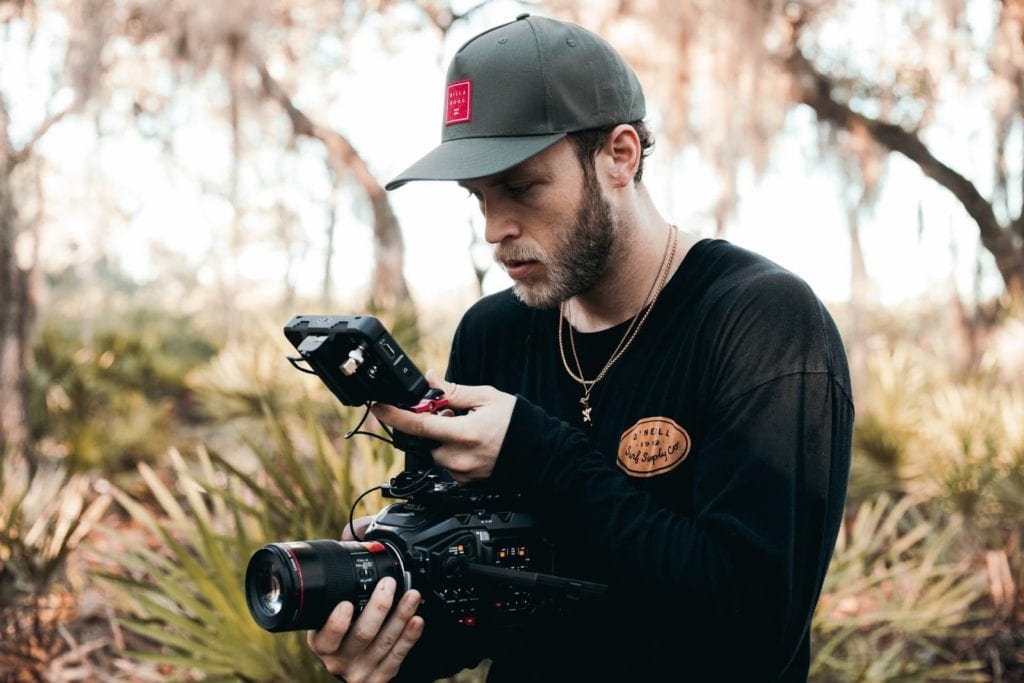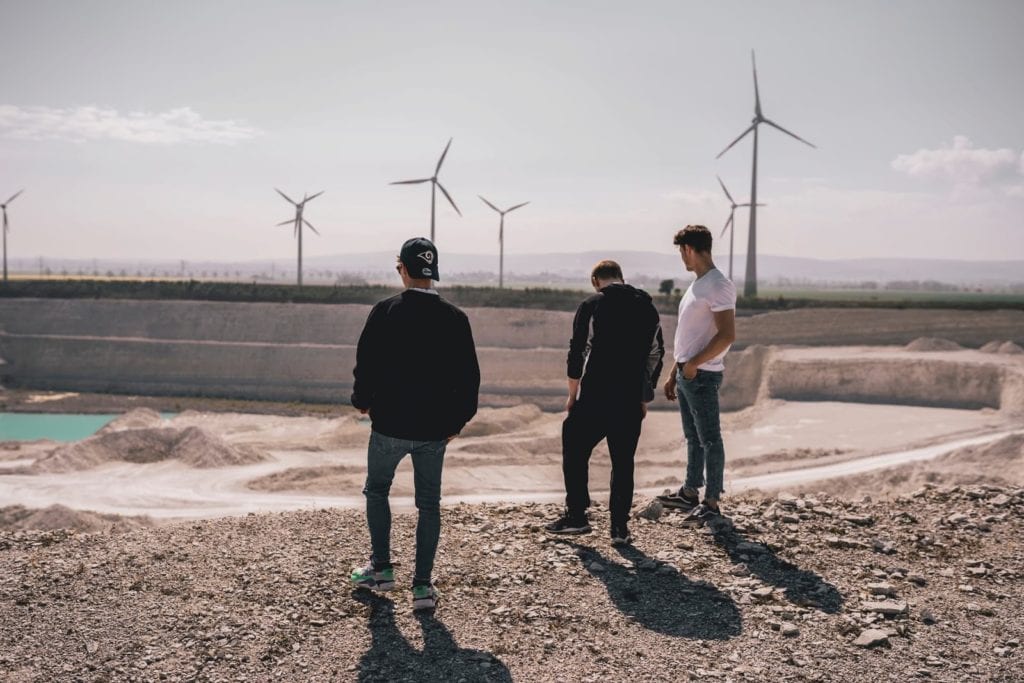How To Find The Best Film Locations For Your Short Film
“Choosing a location is integral to the film: in essence, another character.” – Ridley Scott
Securing the best possible film locations for your short film can seem like a daunting task, especially if you or your production team are working with a tight budget.
You’ve got potential fees, contracts, permits, and the logistics of it all to worry about and it can often dissuade filmmakers from shooting their short films in the locations of their choice.
However, finding the best film locations for your independent project can be obtainable with an effective location scouting plan. Planning your film locations will take place during pre-production and much like purchasing equipment or hiring a film crew, it’s a crucial component of this process.
The locations you choose have the power to make or break your film — so choose wisely and realistically. Now, without further ado, let’s dive into some of the most effective ways to secure suitable locations for your short film.
Start With A Shot List And Storyboard

Before any location scouting plan is devised, we recommend breaking down your script and drawing up a shot list and storyboard.
A script breakdown is a fundamental step in pre-production that will allow you to organize all the necessary elements needed for your production — such as the specific locations you’ll need for your short film.
Not sure how to do a script breakdown? No problem. Check out our previous blog post on how to break down your script for production.
Once you’ve painted a better picture of what you’ll need for each scene from the script breakdown — such as props, equipment, cast, and crew, etc — you should begin formulating a shot list and storyboard
The shot list, in short, serves as a checklist for the specific shots, equipment, manpower, and character actions needed for each shot and scene. This can help determine the logistics of specific locations and it can allow for a much smoother film shoot.
Storyboarding helps visually map out the individual scenes and shots of your film. It’s a great tool for scouting film locations because it can act as a reference for the film’s visual direction and the specific needs of each location.
Check out our blog post on storyboarding if you’re interested in learning more about how it can be a crucial step in your film’s pre-production process.
Organize and Plan Out Your Film Location Search

Film locations are one of the important aspects of film production. If you check out the end credits to some of the Hollywood blockbusters, you’ll see that an entire department is centered on finding and securing locations.
Again, this is because film locations are just as important as casting or even writing the script. It has the power to deliver an entirely different experience for your audience — good or bad.
So, you should devise a well-thought-out plan of attack for finding the best possible locations for your film. If possible, try hiring a location manager or producer who has experience in securing film locations.
When organizing a location scouting plan, take into account the region in which you’re filming. Some areas are known as filming regions, like Los Angeles or New York City. These areas are likely to have more legal procedures and precautions for filmmakers, as opposed to regions with a less active film region.
Check out our previous blog to learn more about gaining permission with film permits and location releases if you’re interested in shooting in public spaces.
Once you’ve determined whether or not your area is considered a film region, try to build a list of potential locations and contacts in your area that can be of good use. Contact your local government office or film commission for assistance. They can help find potential locations for your film.
You can also look into location scouting websites for listings of available locations offered to filmmakers.
Utilizing production management software, such as StudioBinder, can be of great help for organizing and structuring not only your location scouting plan but also anything pre-production-related.
Search Within Your Network

The process for obtaining permits and releases for film locations can vary state-to-state — so one of the things you can do is ask other filmmakers within your network and local area for advice on securing locations.
There will likely be more experienced and professional filmmakers able to help you with the proper steps and legalities of asking for permission, obtaining permits and insurance, paying fees, etc.
If, however, you’re working with a tight budget and can’t afford location expenses, try searching within your network to see if someone is willing to give up their home space or backyard for a few days to you.
Filming on private property is a great alternative to renting out public spaces if you’re low on funds. Logistically, it can also make the filming process much easier and less stressful for your cast and crew.
Consider Guerrilla Filmmaking

One of the many obstacles to making short films is securing public locations and obtaining the funds to pay for them. Typically, smaller productions will look for non-public and private locations to cut down on costs and potential legal issues.
However, with the new advantages of digital cinema cameras, guerrilla filmmaking has become a more viable and popular alternative for filmmakers working with a smaller budget.
Guerrilla filmmaking is a technique filmmakers use to film in public locations without gaining permission. Although this tactic can save you and your film crew a lot of time and money, it can still come at a cost. Depending on where you live, this can be very risky, as you can find yourself having to deal with fines, fees, or other legal troubles for filming without permission.
Your first option should always be gaining permission, but if you’re settled on a specific location and gaining permission is near impossible, then consider being swift and utilize guerrilla filmmaking.
Scout Locations

After you’ve constructed your film locations list and before you secure any locations, make sure you set aside time to scout.
Whether it’s your location manager, producer, or individual scout, someone within your production team should take the time to travel to each potential location to take notes and photographs of the area.
Directors, cinematographers, and production designers should also visit sites to see if the location fits their vision and the script. This process is to ensure that the film locations you’ve chosen before production begins are best fitted for your film.
Check out our previous blog on film location scouting if you’re interested in learning more about this process.
Conclusion
As we stated before, film locations should be given the same amount of emphasis as the other pre-production components — such as casting. A film location, in a sense, is another character in your film.
Remember, filmmakers working on short films tend to be working with smaller budgets. Just because your budget is smaller, that doesn’t mean you don’t have the ability to find great locations for your film.
Reach out to your local film network for assistance, contact your local government and film commission and look into location scouting websites. There are many ways to find and secure locations even for the smallest of productions.
If all else fails, you still have the option to film certain scenes or get specific shots with the guerilla filmmaking tactic. While this is a viable alternative, beware of the potential setbacks of shooting in public spaces without gaining permission.
If you need help paying for location fees or any other aspect of your production, check out our one-sentence pitch competition for the chance to win up to $10,000 in funding for your short film.
It’s really interesting and wonderful sort of advice. IAM very much grateful for your time today. I want a help but seriously agreed with the way you enlightened and educates me
Thanks for the update. Remained blessed forever abundantly.
You’re very welcome! 🙂